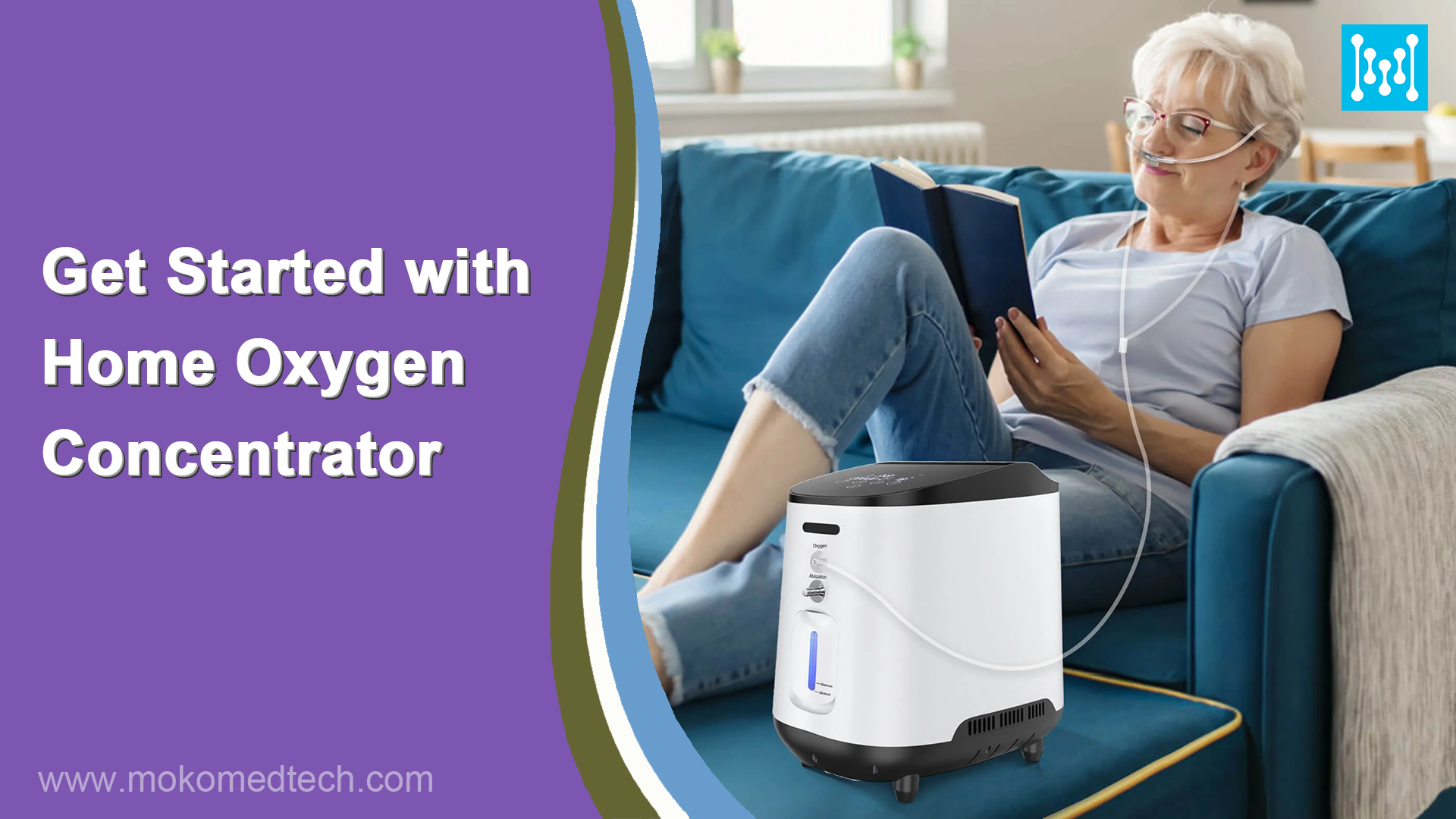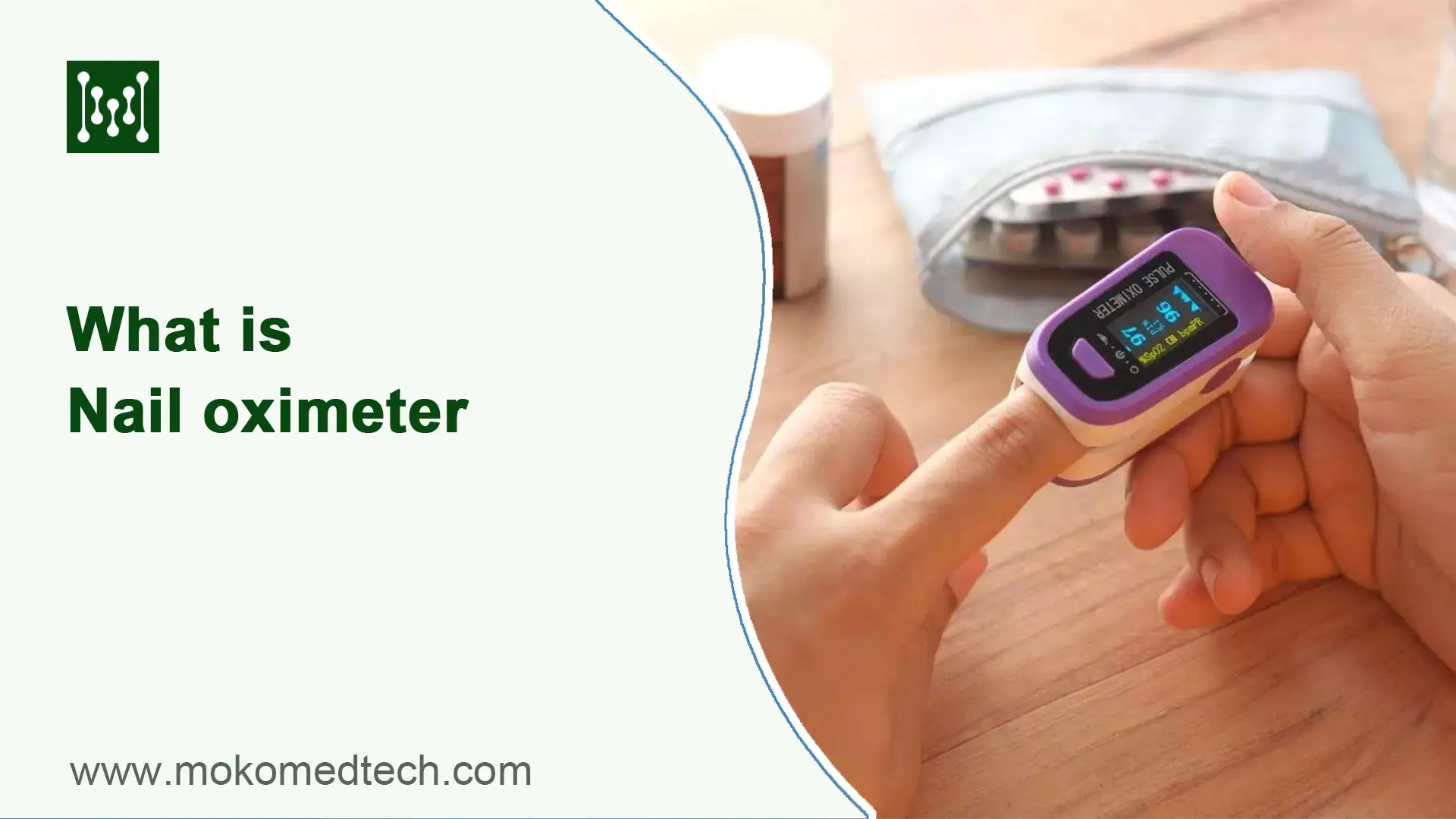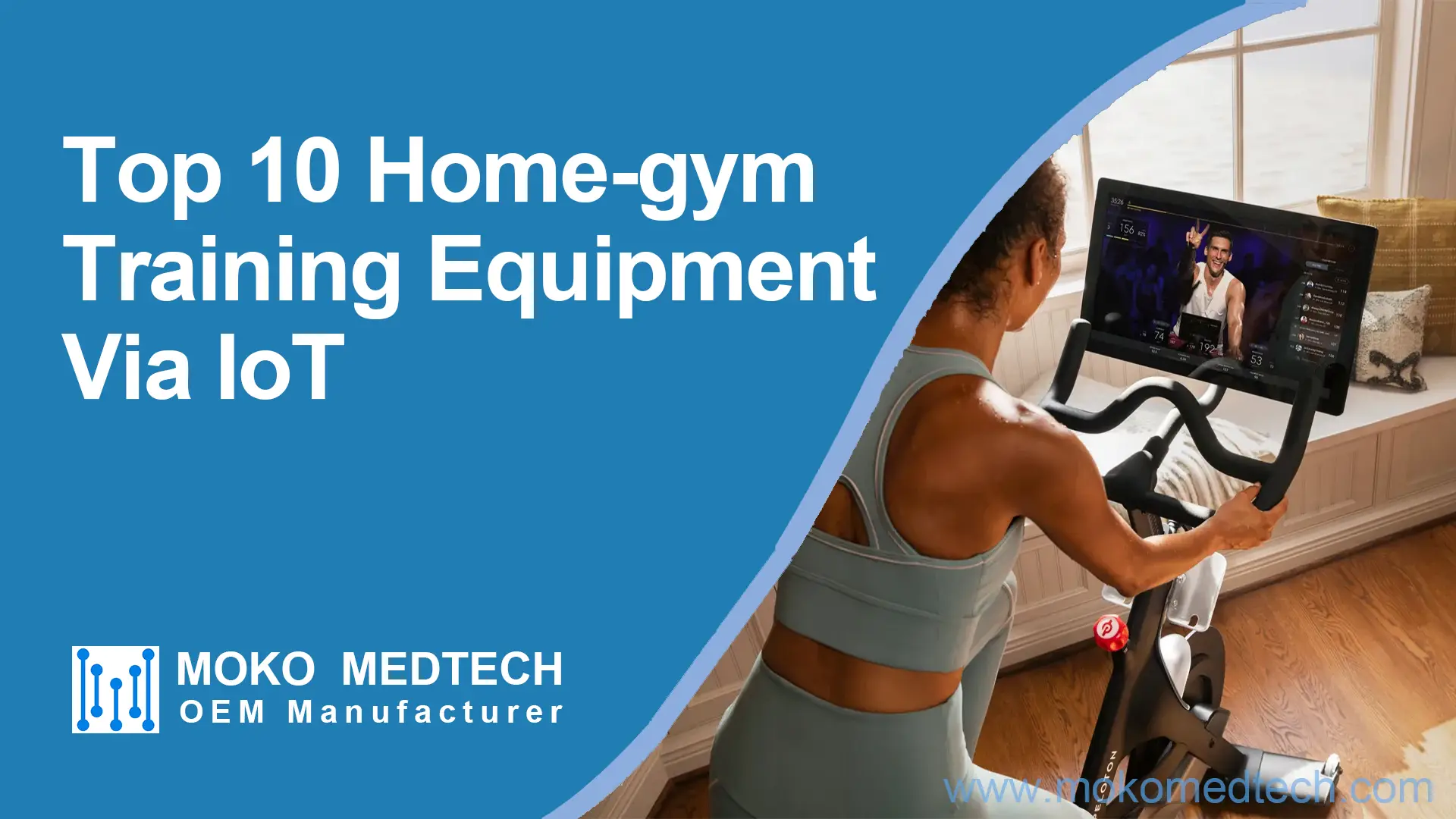During Covid-19, a household oximeter was a very useful portable medical device for home use. Covid-19 patients often have abnormal blood oxygen saturation, and detecting the patient’s blood oxygen status can determine their physical condition. Household oximeters are cheap, convenient to use, compact and portable, and are a very popular medical device.
More and more households are purchasing home oximeters, and the market for home oximeters is also growing. More medical device companies have become manufacturers of home oximeters, and the market is full of various household oximeter. Various oximeters on the market are specially designed for different situations, and we can choose the best oximeter based on our own situation. Next, let’s learn about blood oxygen meters and choose the appropriate one.
Application Scenarios of Household Oximeter
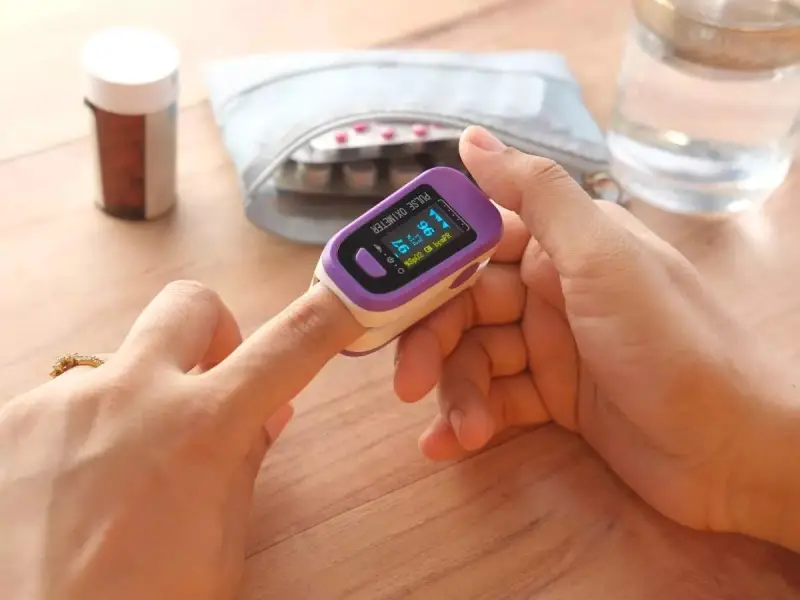
The application scenarios of blood oxygen monitoring are very extensive, and blood oxygen monitoring technology is used in fields such as hospital operating rooms, monitoring rooms, emergency wards, research on postoperative recovery and respiratory sleep of patients, and community medical monitoring. As this part of the application scenario is in hospitals, I will not expand on it. I just want to emphasize that blood oxygen monitoring is very important and can effectively reflect the respiratory oxygenation status of the human body, It is incorrect for some people to say that measuring blood oxygen is meaningless to determine whether the body tissue is lacking in oxygen.
So What Are the Application Scenarios of Household Oximeter ?
- Patients with lung or respiratory diseases: These types of patients are often accompanied by low blood oxygen levels. Prolonged low blood oxygen levels can cause the body to develop a certain tolerance for hypoxia, and patients may not feel difficulty breathing, but they are actually in a “silent hypoxia” state, which is very dangerous. Therefore, it is necessary to regularly measure blood oxygen.
- Newborn infants: If the cardiopulmonary function of newborns is not sound, it can lead to low blood oxygen concentration, which is very dangerous. Therefore, it is necessary to regularly monitor the baby’s blood oxygen saturation.
- Children who are physically weak: Children with congenital or allergic respiratory diseases, as well as children with childhood asthma, are prone to developing hypoxia. Oximeters can tell parents the true situation of their children. The World Health Organization recommends that for children, if their blood oxygen level is below 90%, accompanied by coughing, breathing difficulties, inability to drink milk, drowsiness, confusion, convulsions, etc., they should immediately call for first aid.
- White collar overtime: Long term overtime in the office without air conditioning at night, poor air flow, resulting in hypoxia, dizziness, or chest tightness, affecting work efficiency. By measuring blood oxygen saturation, timely understanding one’s physical condition, taking appropriate rest and breathing fresh air, and avoiding deterioration of health conditions.
- High altitude travel companion: Due to the high altitude and scarcity of oxygen, the blood oxygen saturation of the human body gradually decreases with the extension of travel time. Oxygen inhalation can effectively improve hypoxia conditions, but long-term excessive oxygen inhalation may lead to adverse consequences of oxygen poisoning and oxygen dependence. Therefore, it is necessary to measure blood oxygen saturation in a timely manner and guide oxygen inhalation at the appropriate time.
- Working in a closed environment: Working in a closed environment with no air circulation for a long time can cause hypoxia, dizziness, and dizziness. Blood oxygen saturation should be measured in a timely manner to avoid safety accidents. People who smoke for a long time or passively smoke second-hand smoke should measure their blood oxygen levels more to maintain their respiratory health.
- Rehabilitation treatment for COVID-19 patients: many COVID-19 patients’ blood oxygen saturation is lower than the normal value, which is very dangerous. The blood oxygen saturation should be measured regularly. If it is lower than 95%, you should go to the hospital in time for further inspection.
More and more people, even many young people, especially those who are overweight, are beginning to realize that they have sleep apnea problems. They should measure their blood oxygen levels more and be alert to the hazards of silent hypoxemia.
The Principle of A Oximeter
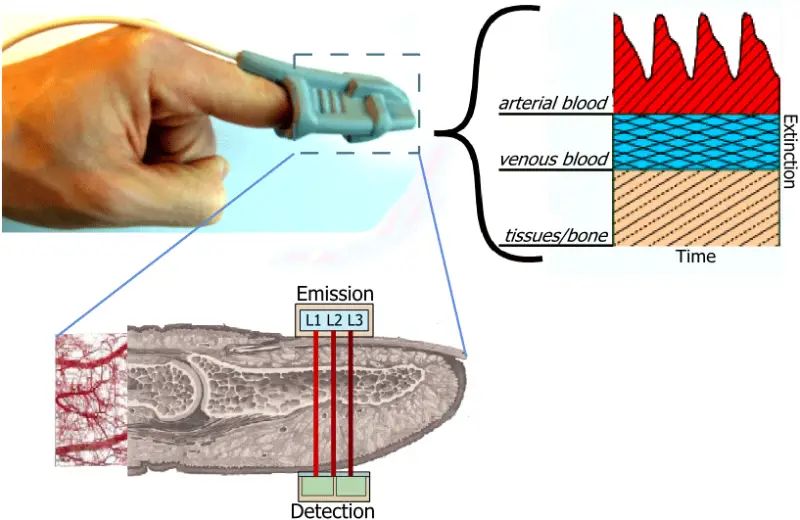
The household oximeter adopts photoelectric blood oxygen detection technology combined with volume pulse tracing technology. Two different wavelengths of light (660nm red light and 905/940nm near-infrared light) are used to irradiate the human nail tip through a fluoroscopy clamp finger sensor, and the measurement signal is obtained by a photosensitive element to display the measured results. Generally speaking, a blood oximeter consists of three main components: a photoelectric sensor, a microprocessor, and a display section.
The principle section may seem boring, so I won’t go into detail. Readers can simply understand a blood oximeter as a device that emits and receives two different wavelengths of light. By analyzing and processing the signal received by the photosensitive element, the value of blood oxygen saturation is obtained and displayed on the screen.
Advantages of Oximeter
Most of the commonly used oximeters on our market refer to clip type oximeters, so when we talk about oximeters later, we default to referring to clip type oximeters. As a regular medical device in households, the advantages of oximeters are still very obvious:
- Non invasive and painless measurement is convenient. The finger clip oximeter only needs to be gently clamped on the finger for a few seconds to measure, and the measurement results can be obtained. It is non-invasive and painless, and can be repeatedly measured anytime, anywhere, and can be accepted by children and elderly people. In hospitals, many nurses also enjoy using this method to measure blood oxygen levels for patients.
- The technology is mature and the results are accurate. The first pulse oximeter was born in the 1970s, and after decades of continuous polishing, this technology has become very mature and the test results are accurate enough to be recognized by clinical doctors. Many hospitals have now incorporated the use of finger clip oximeters for blood oxygen measurement into their standard admission procedures. Some literature points out that the accuracy of using a blood oximeter to evaluate hypoxemia is 96.93%, which is higher than traditional methods of evaluating hypoxemia by 82.55%.
- Compact, convenient, and affordable. A household finger clip oximeter is only the size of a mobile phone charging head, making it very easy to carry and doesn’t take up space at home. The most important thing is that the price is cheap, and you can buy a pretty good oximeter for less than 200 yuan. In hospitals, if you want to measure blood oxygen, you often use multifunctional monitors. These devices are relatively large and expensive, and although they are quite powerful, for household use, a finger clip type blood oxygen meter is sufficient
How to Choose A Household Oximeter
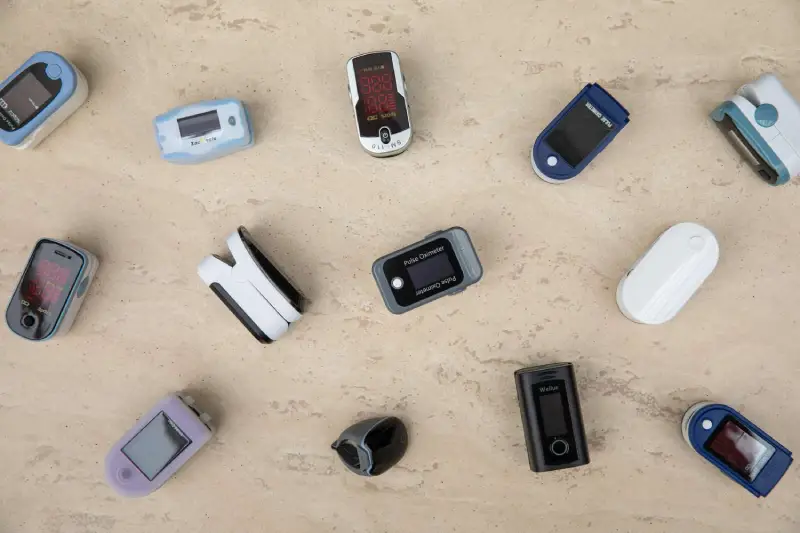
What kind of oximeter is considered a good oximeter? A oximeter that fully meets the following standards is a good oximeter, and the specific standards are shown in the table below:
- GB/T 191-2008
- GB 9706.1-2007
- GB/T 9706.15-2008
- GB/T 14710-2009
- GB/T 9969-2008
- GB/T 16886.1-2011
- GB/T 16886.5-2003
- GB/T 16886.10-2005
- YY 0505-2012
- YY 0709-2009
- YY 0784-2000
- YY/T 0466.1-2009
- YY/T 0316-2008
This pile of standards alone may make readers dizzy, so here I can tell you a few key points that need your attention and a few seemingly important but not so important purchase misconceptions.
Key Points to Focus On:
1. Complete Certificates and Licenses
Every medical device sold and used in China, whether for hospital or household use, must have a medical device product registration certificate. The products that can obtain this registration certificate are all medical device products certified by official national institutions. Therefore, purchasing a registered oximeter is our most important and basic requirement.
For oximeter, there are currently over 60 manufacturers in China with 104 registration certificates. Among so many products, which one should be chosen? Of course, it is best to choose products from large and reputable manufacturers. What are the specific products from major manufacturers to buy? The author will introduce later that friends who don’t have time can directly skip to the “Blood Oximeter Brand Recommendation” section.
2. Accurate Measurement
There are many selling points for oximeters on the market, such as color screen display, large font size, and friendly to the elderly; For example, there is a voice alarm function and so on. In fact, these functions are all icing on the cake functions. For a oximeter, the measurement accuracy is 1, and other additional functions are the latter 0. According to national standards, the accuracy of a good oximeter’s blood oxygen saturation measurement is ± 2% (when the blood oxygen saturation is between 70% and 100%); The measurement accuracy of pulse is ± 1% or 1 bpm. Some manufacturers claim to be able to meet this standard, but in reality they have not, especially the parameter of blood oxygen saturation. For ordinary consumers, it is difficult to verify the accuracy of these parameters. Generally speaking, powerful factories will have specialized testing instruments, and in larger measurement institutions, there will also be specialized vital sign simulators to test the accuracy of oximeters.
3. Excellent Quality
Although a blood oximeter is not expensive now, I believe friends do not want it to break down after six months, just like the author’s experience. Therefore, the quality of the product is highly worthy of friends’ attention. The difference between the products of large factories and those of small factories is often not easily apparent from the appearance, but in terms of circuit boards and chips that we cannot see, the difference is actually quite significant. Poor soldering of circuit boards or the use of inexpensive components can increase the failure rate of blood oxygen meters; Products that have not passed electromagnetic compatibility testing can easily display incorrectly or even cause the entire machine to malfunction; If the silicone material used for direct contact between the shell material and the skin does not pass biological evaluation, it may lead to secondary infections or skin allergies in children.
Generally speaking, a good oximeter should have a medical device registration certificate in the product manual, detailed accuracy instructions in the product specifications, and mention what electromagnetic compatibility tests have been passed. Manufacturers who are confident in their products will indicate a service life of 5 years, while some manufacturers only dare to indicate 2 years. I believe that manufacturers with a commitment of 5 years have more confidence in the quality of their products.
The above are a few points that we need to focus on, so what are the misconceptions in our purchase?
Misunderstandings in Purchasing Household Oximeter
1. Price:
At present, the minimum cost of a blood oxygen meter is only 30 to 40 dollars, but one must not be greedy for cheap. Although a blood oximeter belongs to household medical devices, it is also a type of medical device that is responsible for our health. We don’t want to go to the hospital and the cheaper the equipment we check ourselves, the better. Therefore, spending more money to buy a reliable and long-lasting device is actually the most cost-effective choice.
2. Additional Functions to Add Icing On the Cake
Whether the screen is colored, whether it uses dry or lithium batteries, whether it has voice broadcasting function, whether the screen comes with flip function, and so on, are all visible functions to consumers and can become bonus points for blood oxygen meters. However, I believe that these are not reasons for the high price of blood oxygen meters. Instead of spending money on these functions, it is not like spending on improving component quality and using high-quality shell materials as mentioned earlier Strengthen the ability of electromagnetic compatibility.
Household Oximeter Brand Recommendation
- Yuwell
Founded in 1998, Yuwell is a listed company and a major medical device supplier in China. It has established a comprehensive professional service platform covering the field of medical devices, consisting of a large health ecosystem consisting of household medical, clinical medical, internet medical, and a better life. Its products mainly cover multiple fields such as respiratory oxygen supply, blood pressure and blood sugar, rehabilitation care, sensory disinfection, surgical instruments, and traditional Chinese medicine instruments, serving over 200000 medical institutions in China, Covering over 110 countries and regions overseas
- MOKOMEDTECH
With over ten years of experience in the medical field and IoT industry, MOKOMEDTECH can design and build working prototypes quickly and efficiently. Our expertise allows us to provide the most reliable medical electronic devices to customers from various markets, increasing their market positions while guaranteeing the safety, security, and effectiveness of their medical devices.
- CONTEC
Medical was established in 1996 and is a high-tech enterprise specializing in the research and development, production, and sales of medical diagnostic and monitoring equipment. CONTEC Medical’s products cover multiple categories such as blood oxygen, electrocardiogram, ultrasound, monitoring, and compression, and have been sold to more than 130 countries and regions worldwide. They are widely used in medical institutions, health management institutions, and home personal health care.
- HealForce
A professional manufacturer and agent of international professional medical equipment and life science laboratory instruments, focusing on building a modern enterprise with HealForce’s own brand and independent intellectual property products. HealForce has multiple offices and after-sales service stations in first and second tier cities in China, forming a nationwide sales and service network, focusing on providing users with high-quality medical device products and services.
- ChoiceMMed
Established in 1993, it is an internationally renowned large-scale medical equipment manufacturer mainly engaged in the research and development, manufacturing, and sales services of medical and health products, under the Chasesun Group. ChoiceMMed has applied for hundreds of patents both domestically and internationally, and has launched a series of products including blood oxygen, electrocardiogram, blood pressure, fetal heart rate, body temperature, multi-parameter monitoring, health checkups, and physical examination machines. Its marketing network has spread to multiple countries and regions at home and abroad.
- Philips Respironics
Philips Respironics was established in 1976, formerly known as Respironics in the United States. It is a leading global expert in sleep diagnosis and non-invasive ventilation treatment for household ventilators, medical oxygen machines, and other sleep related diseases. It focuses on the field of sleep respiratory health and provides personalized solutions for sleep disorders diagnosis and treatment and non-invasive ventilation for clinical and end users and their families worldwide. It holds a BIPAP dual level ventilator invention patent and dominates the domestic home ventilator market.
- EDAN
EDAN was founded in 1995 in Shenzhen, a listed company and a well-known provider of medical and health products, solutions, and services. It is committed to providing high-quality products and solutions that meet clinical needs for medical institutions, covering patient monitoring, electrocardiogram diagnosis, ultrasound imaging, maternal and child health, in vitro diagnosis, and smart health business sectors. It covers more than 100 innovative and high-quality medical products, serving more than 170 countries worldwide.
- BLT
BLT was founded in 1993 as an influential listed company in the Chinese medical equipment industry, integrating the research and development, production, and sales of medical devices. In 2003, it was awarded the “National Multiparameter Monitor Industrialization Base”, with products covering five major business modules: life monitoring, electrocardiogram diagnosis, blood purification, medical services, and mobile medicine. It has established 15 subsidiaries worldwide, We provide high-quality products and services to over 140 countries and regions worldwide.
- CREATIVE MEDICAL
CREATIVE MEDICAL was established in 2000 and is a high-tech enterprise that integrates the research and development, production, and sales services of medical instruments. It is affiliated with the LEPU Group. CREATIVE MEDICAL has strong technological research and development capabilities and production levels. It has launched products such as multi-parameter monitors, neural function reconstruction and basin rehabilitation treatment systems, home health products, and mobile medical and health all-in-one machines. Currently, it has been exported to more than 100 countries and regions worldwide.
- Beurer
Beurer was founded in 1919 and is a well-known leading brand in healthy living in Germany. It is renowned worldwide for its star products such as electric heating pads, thermostats, electric blankets, and blood oxygen meters. Beurer has a professional design team and production base, and currently has high visibility and reputation in the fields of beauty care, medical health, quality of life, sports life, etc. Its marketing network has spread to multiple countries and regions around the world.
Precautions for Using A Household Oximeter
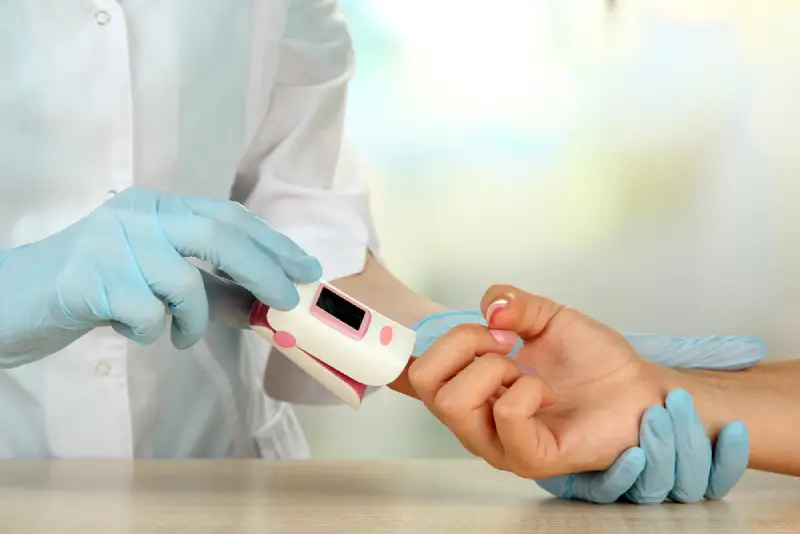
Finally, the author introduces the following precautions for daily use of blood oxygen meters to friends
Possible Reasons for Inaccurate Measurement of Blood Oxygen Saturation
- Users should remain stationary during testing, as excessive movement may result in inaccurate test results
- The tester’s fingernails covered with nail polish or gray nails will affect the transmission of light of different wavelengths, and will also lead to inaccurate test results
- Strong direct sunlight can interfere with the performance of the oximeter sensor
- While measuring blood oxygen saturation, measuring blood pressure with the same arm can also affect the measurement accuracy of the oximeter
- Try to place the infrared probe directly above the nail plate and fit it as closely as possible
Factors Affecting the Performance of Household Oximeters
1. Hemoglobin with impaired function: Hemoglobin with impaired function cannot carry oxygen, and the degree of blood oxygen saturation may appear normal. However, due to the small amount of hemoglobin that can carry oxygen, patients may still experience hypoxia.
2. Anemia: Anemia can cause a decrease in the oxygen content of arterial blood. Mild anemia patients may still experience hypoxia despite appearing normal blood oxygen saturation readings. If the hemoglobin level is below 5 grams per deciliter, the oximeter may not be able to measure blood oxygen saturation.

